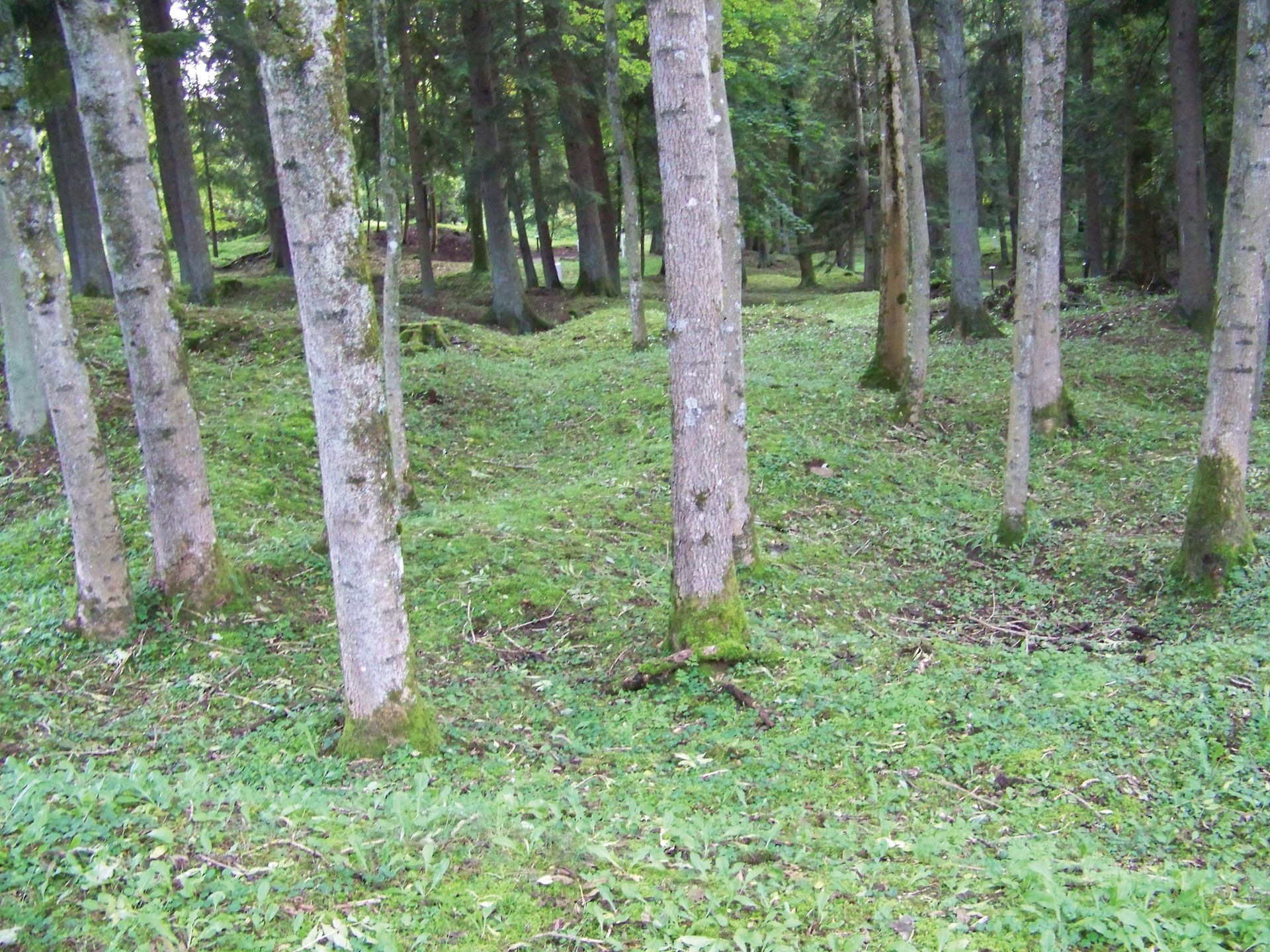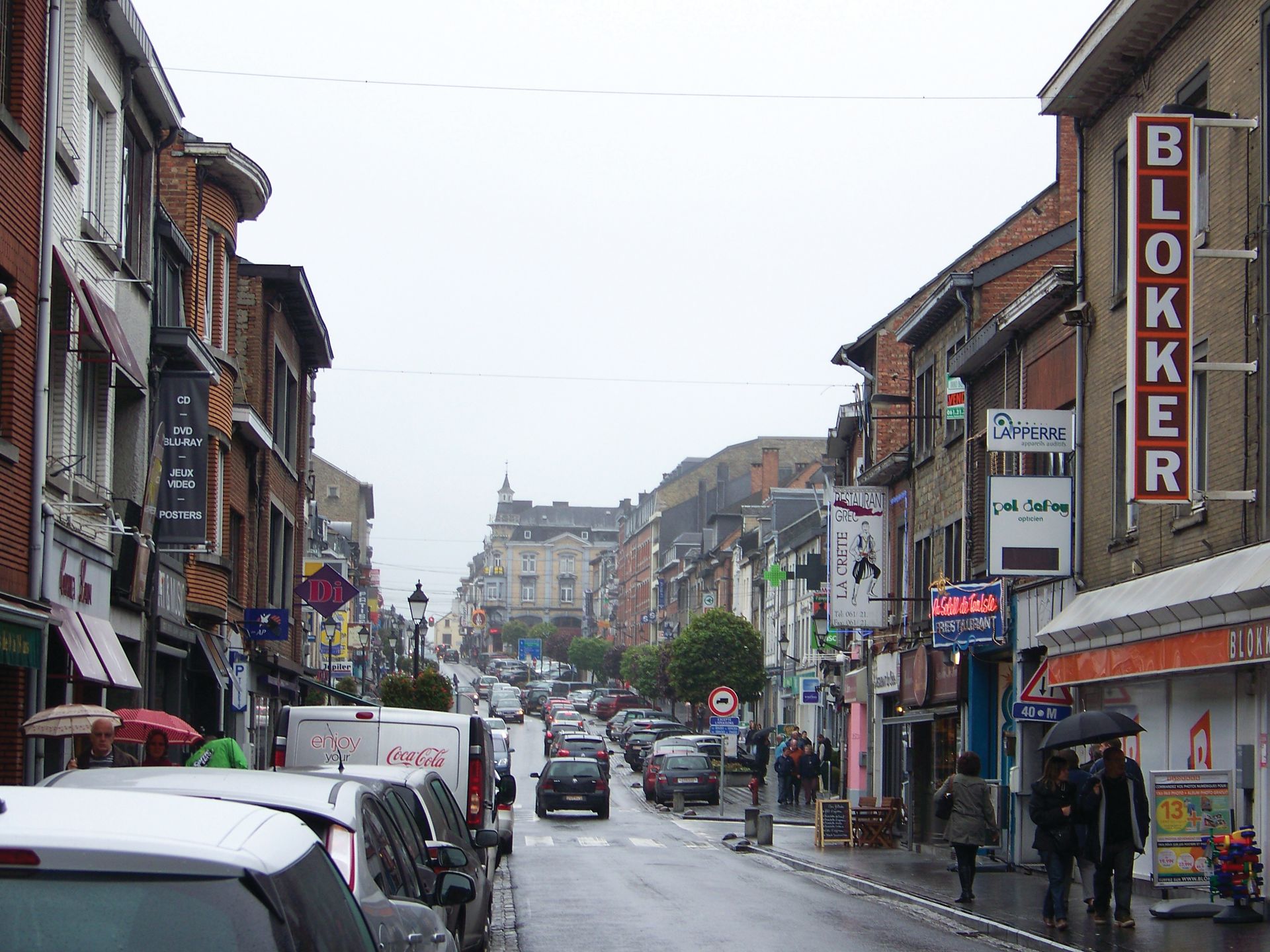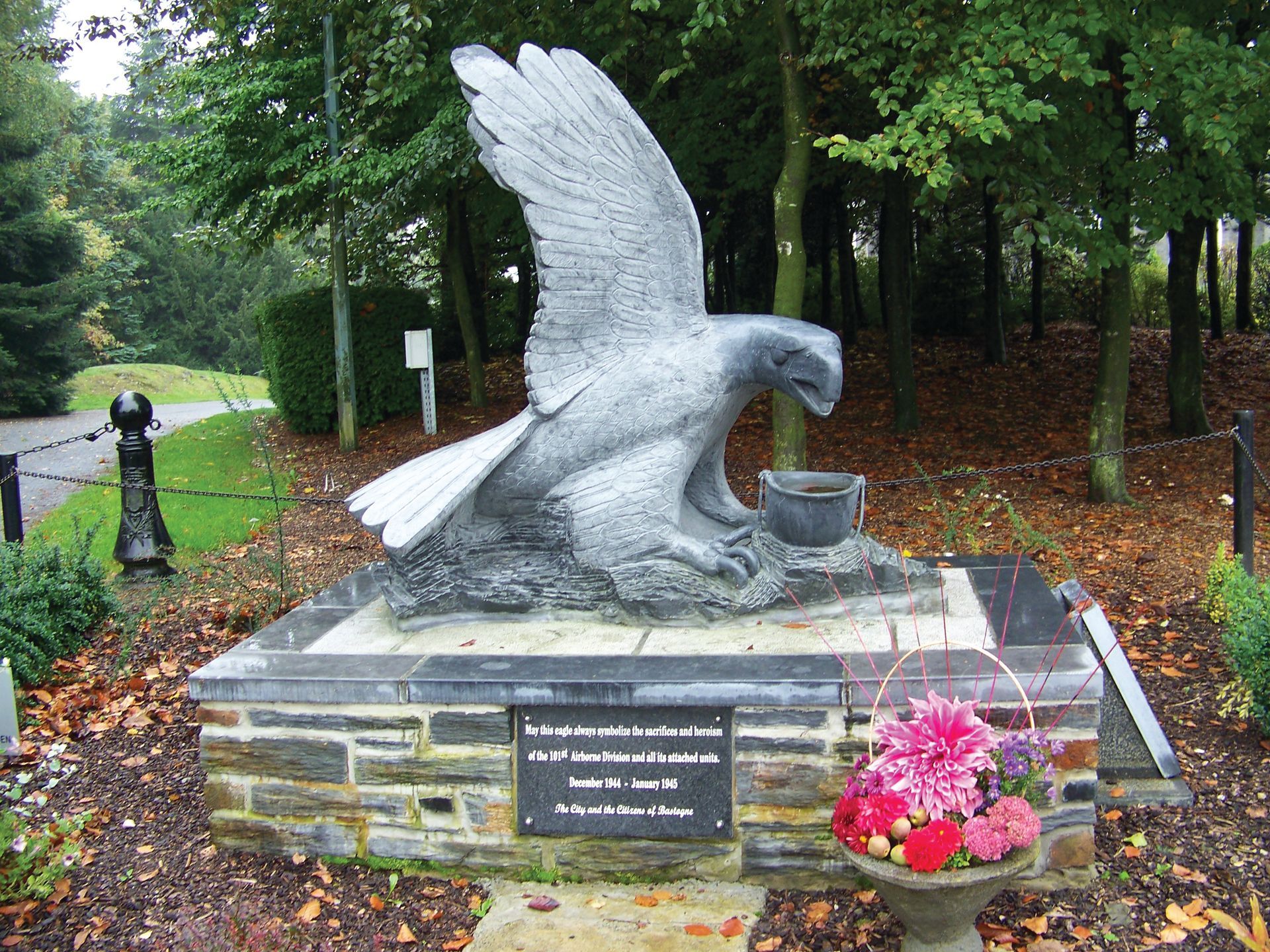Battle of the Bulge: 80 Years Later
by Diana Loski

Remnants of the Ardennes Trenches
(Author photo)
After the Allied forces pushed ashore on the beaches of Normandy, they persevered inland quickly, pushing back the German Wehrmacht through the summer of 1944. In July that year, a group of German leaders attempted, and failed, to assassinate their Führer, Adolf Hitler. While it seemed that the war would soon end with the rapid progression of the American and British troops toward the Rhine, and with the Nazi leader bedridden and shaken, Hitler had one more card to play. He planned it while he convalesced.1
An animal is most dangerous when it is cornered – and humans are the same. Hitler planned for months a bold and daring counterattack, carefully monitoring the Allied advance through France. Near Belgium’s border with Luxembourg and Germany, in the Ardennes Forest, the Nazis made their move. It is known to history as The Battle of the Bulge.
The Allies moved so quickly through France during the summer and fall of 1944 that there were not enough supplies to keep their progression moving forward. Food, medicines, ammunition for the troops and especially gasoline for the tanks and jeeps eventually slowed to a trickle. General Eisenhower explained that “all along the front the cry was for more gasoline and more ammunition.”2
The Nazi spies kept Hitler apprised of the Allied lack of gasoline and supplies. He used the American’s virtual standstill to draw troops from the Russian front and from Norway to the Ardennes. He also ordered improving the defenses in their Siegfried Line, the German defense line near the Belgian border. The Siegfried Line already had tunnels and cement bunkers. Hitler used young boys and civilians to shore up these defenses due to the lack of military troops available. In September, a spate of heavy rain turned the roads into a morass of mud, making the American progress even more halted. To the north, the English and Canadian troops led by a cautious Field Marshal Montgomery also slowed. Hitler saw his chance. “Now is the time to attack,” he said, “when the enemy is most exhausted.” It was an enormous gamble. Hitler’s generals, who had fought the Allies through France, warned him that it was too much to expect from their own beleaguered troops. Hitler ignored them. “We must regain the initiative,” he huffed to his two lieutenant commanders, Alfred Jodl and Wilhelm Keitl. “Der Führer has spoken.”3
In addition to the amassing of German troops to the Ardennes, the Nazis also prepared a number of their army who could speak English well and without an accent – mostly derived from their own visits to England and the United States before the war. Taking American uniforms from captured (and deceased) soldiers, these agents were experienced enough to successfully infiltrate the American lines.4
General Eisenhower, who took headquarters in the French town of Verdun, did not rule out that the Nazis might counterattack, but as winter set in, the Ardennes was choked with snow and the roads were nearly impassable. Bitter cold soon rendered everything frozen – including the tanks and jeeps, and most of them were immovable. “Progress was extremely slow,” Ike wrote.5
With Christmas approaching, and with a silence among the German lines, Ike and his army generals concluded that some of their troops deserved a few days’ leave for the holidays. New recruits had come in to take their places. No one expected that the Nazis would attack under such conditions.
So many Christmas traditions originated in Germany, and the German people certainly celebrated Christmas – but not Hitler. An atheist, he and his commanders of the Reich attempted to erase all Christianity and references to Christ. As a result, in Nazi Germany Christmas was not celebrated – a Winter Solstice commemoration replaced it. Even hymns like Stille Nacht had changed lyrics to remove all traces of what, or who, was once celebrated at that time of year. Therefore, Hitler and his Nazi regime would not take any time off for the holidays, as the Kaiser’s troops had briefly done during World War I.6
Hitler’s plan was to punch through the Allied lines at the Ardennes and use the roads to reach Antwerp, a large port city in Belgium. There were two crossroads towns to secure en route: St. Vith and Bastogne. The Allies were aware of the importance of the two towns as well, and had troops stationed in both places.
On December 16, 1944, the Wehrmacht (the German armed forces – the name means, fallaciously, “defensive forces”) which also contained the elite Panzer (tank) divisions, attacked the Allied line, which stretched for many miles along the Ardennes Forest. To describe the weather as inclement was an understatement. A dense fog enveloped the area, making air support impossible for the American troops. The English troops, far to the north, were unable to join the Allies. As a result, the Germans pushed through the Allied deployment in places, and managed to reach far behind the lines. As there was a significant bulge in the line, the battle became known as The Bulge.7
General Eisenhower and General Bradley were at Ike’s headquarters in Verdun, discussing how to overcome the gasoline shortages, when an orderly came in and reported the attacks. Ike quickly realized it was likely a counteroffensive by General von Rundstedt. He acknowledged that “initial progress made the heavy assault against our weakly held lines…with a maximum depth of some fifty miles” caused the popularization of the name.8
The Battle of the Bulge lasted for many weeks, as the Wehrmacht, including several Panzer Divisions, attacked incessantly in the winter weather. The 101st Airborne Division quickly joined the struggling Allies, digging trenches in the snow. The troops in the towns of St. Vith and Bastogne endured constant bombings for many days, as they clung stubbornly on to their positions.
Soon food, medicines, and ammunition dwindled for the American defenders, yet “the Americans stubbornly refused to give way,” Ike remembered. Immediately, the troops sent on holiday were ordered back to bolster the lines.9
The 101st Airborne units manned the defenses at Bastogne. General Hermann Goering, one of Hitler’s inner circle and the commander of the Luftwaffe, insisted that “Bastogne was the keystone of the entire attack.” As a result, the Germans laid siege against that crossroads town. St. Vith, too, was in a dangerously exposed position. The Germans believed that they could quickly take the towns, and continue onward toward Antwerp. The Americans held grimly on, and refused to budge. On December 21, the Nazis overran St. Vith, and for a time it was held by the Nazis – the American later regained it on January 23.10
One of the worst atrocities occurred in the early hours of December 17. Near the town of Malmedy in Belgium, American forces were surprised at the sudden attack. They lacked sufficient ammunition to withstand the assault, and were forced to surrender to a group of Panzers. Before dawn that day the Nazis took the prisoners and shot them in a farmer’s field. Only a few of the nearly ninety men managed to feign death and survive. The murdered prisoners numbered eighty-four.11
With St. Vith overrun and Malmedy taken, Bastogne was the lone crossroads in the way of the Nazi war machine. The snow continued to pile up around the nearly frozen soldiers and civilians of the town, with little ammunition and rapidly depleting food and medical supplies.

Bastogne
(Author photo)
On December 22, a Friday, a much- needed miracle occurred. The air cleared, the skies turned blue, and two thousand Allied planes flew over the Ardennes, including the town of Bastogne, dropping needed food, medicines, blankets, and ammunition. From that day, the Americans saw improvement, and were determined to hold the lines. Moreover, General George Patton and his Third Army were on the way to bolster the exhausted troops at Bastogne. He arrived there the day after Christmas. He wrote in his official report, “At 14:00 hours on December 26 made a breakthrough to Bastogne. Liberated town at 18:45.”12
Patton’s arrival with his army did not immediately save the town. In the following days the fight worsened, with significant casualties for both sides. The Luftwaffe emerged from the east, firing on the ground troops. The tide, however, slowly began to turn as Nazi attempts continued to be thwarted. Patton wrote, “On this day four Germans…dressed in American uniforms were killed, and another seventeen…were reported.” The infiltration tactic, known as the Trojan Horse, had failed.13
By the end of the year, St. Vith had also survived and repulsed the attacking Nazis. They had endured “an exposed position” and “had withstood…a terrific assault from overwhelming forces,” Eisenhower said.14
On January 2, the final attack on Bastogne was repulsed, “a spectacular feat of arms”, and the Nazi troops were forced back, despite Hitler’s enraged and castigating demands. While the fighting continued for another week, the danger had passed, and the hopes for a Nazi victory were dashed. Ike explained, “that great German thrust had disappeared.” More fighting occurred as the Americans chased the Nazis “through the snowbanks of the Ardennes.” By the last week in January, they had pushed Hitler’s men eastward, ever closer to the Rhine.15
The losses on both sides were many. The Americans suffered 77,000 casualties, with eight thousand killed, 48,000 wounded and 21,000 captured. The German losses were higher, admitting to just under 100,000 casualties. According to Field Commander Jodl, after the Bulge, over one million, five-hundred-thousand German soldiers had been killed in the war. They would never overcome such losses. Hitler had underestimated the American determination and overestimated the power of his own armies. He would soon take to his bunker in Berlin, and never leave it alive.16
Eighty years ago, a terrible battle for many weeks almost changed the tide of World War II. The valor and tenacity of the American soldiers and their allies stopped a terrible surge, and finally dethroned a tyrant, freeing those who had been enslaved by him, and bringing to light the many murders he committed. Sadly, this is not ancient history. Hopefully, nothing akin to these atrocities will ever make such a defense necessary again.

The Eagle Memorial to the 101st Airborne, Bastogne
(Author photo)
Sources: Christmas in Nazi Germany: Wikipedia.org/wiki/Christmas_in_Nazi_Germany. Eisenhower, Dwight D. Crusade in Europe. New York: Doubleday & Company, 1948. Hawes, James. The Shortest History of Germany. New York: The Experiment LLC Publishing, 2019. The Malmedy Massacre Memorial, Rte. De Luxembourg, Malmedy, Belgium. Merriam, Robert E. Dark December: The Full Account of the Battle of the Bulge. Yardley, PA: Westholme Publishing LLC, 2011 (reprint, originally published in 1947). Patton, George S. Jr. War As I Knew It. New York: Bantam Books, 1980 (reprint, originally published in 1947). Additional information obtained during author’s visit to the Ardennes region.
End Notes:
1. Hawes, p. 184-185.
2. Eisenhower, p. 310.
3. Merriam, pp. 35, 4.
4. Ibid., p. 31.
5. Eisenhower, p. 358.
6. Christmas in Nazi Germany, Wikipedia.org.
7. Eisenhower, p. 347.
8. Ibid., pp. 342, 353.
9. Ibid., p. 347.
10. Merriam, pp. 158, 167, 119.
11. Malmedy Massacre Memorial, Malmedy, Belgium.
12. Merriam, p. 193. Patton, p. 196.
13. Eisenhower, p. 363. Patton, p. 197-198. Merriam, p. 168.
14. Eisenhower, p. 358.
15. Ibid., pp. 357, 363.
16. Eisenhower, p. 365. Merriam, p. 215.
3
caption:
Bastogne
(Author photo)
eagle monument, page 34
Caption:
The Eagle Memorial to
the 101st Airborne, Bastogne
(Author photo)
New Paragraph

